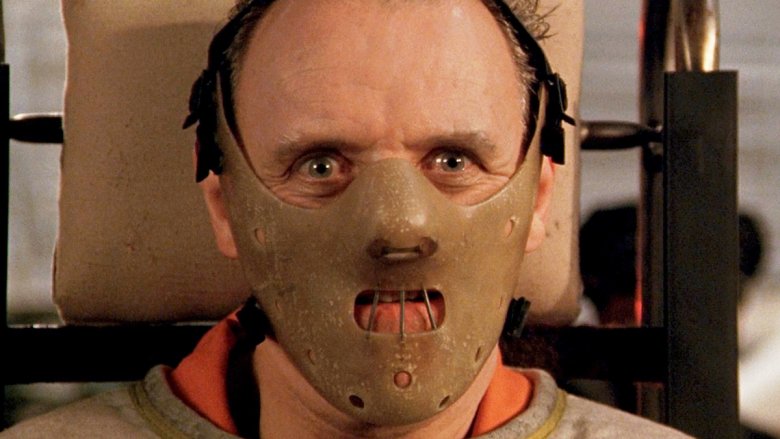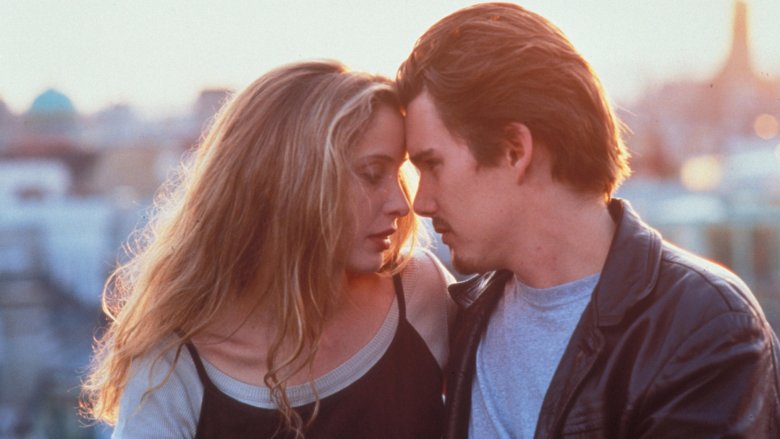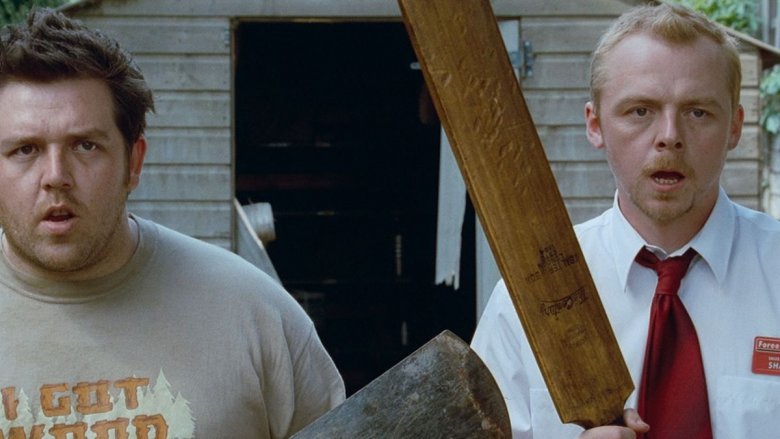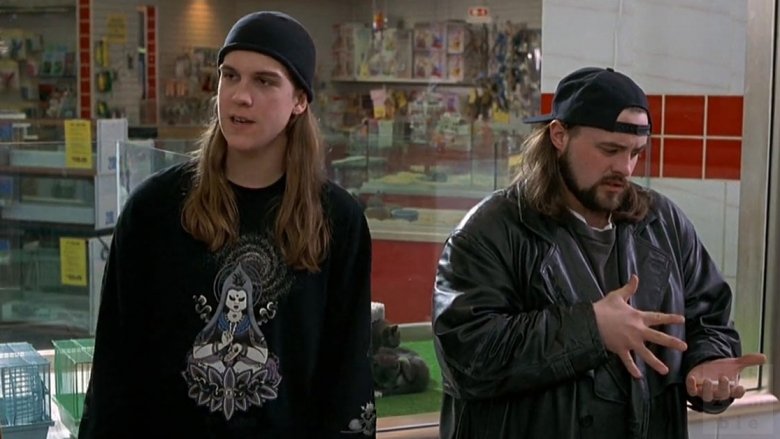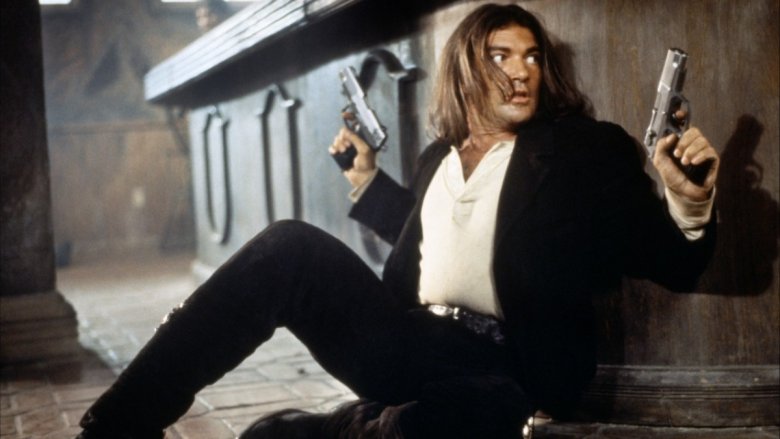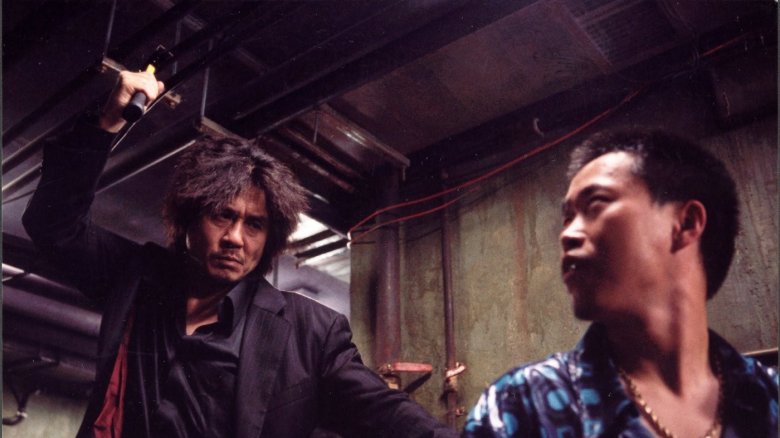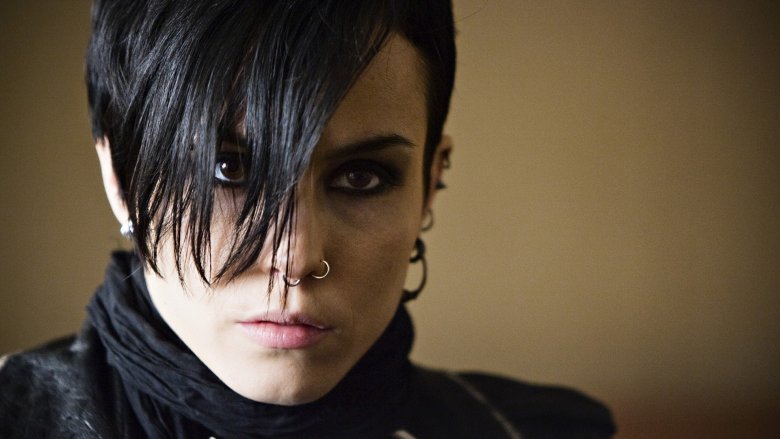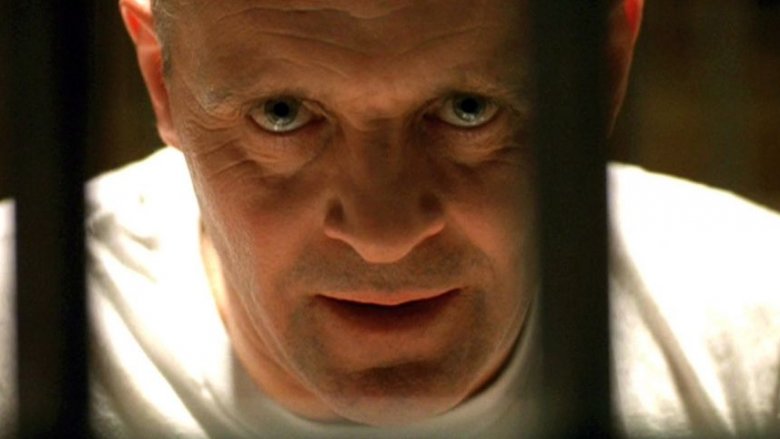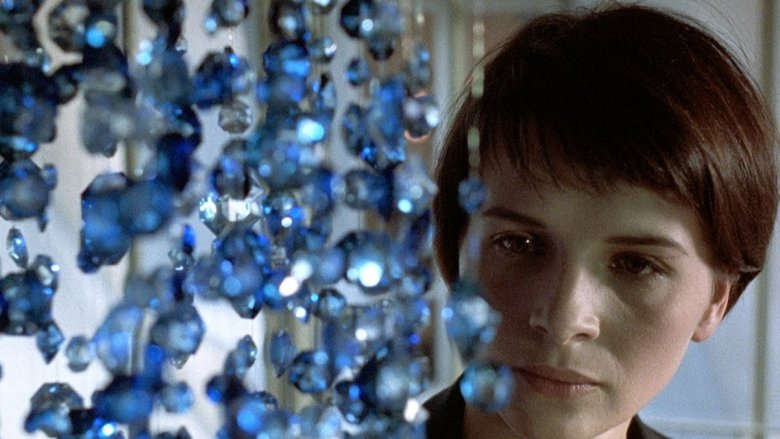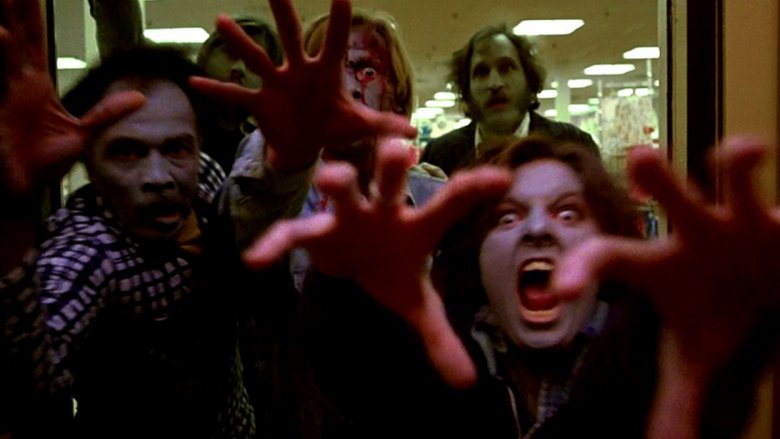The Most Underappreciated Movie Trilogies Ever
Whether a film is based on a series of books or an original concept, if it's a massive success, studios and audiences alike are pretty much guaranteed to clamor for sequels. Sometimes, as with Toy Story, the sequels build on a beloved world and enrich and deepen the characters; however, sometimes a sequel or two ends up feeling like a shameless cash grab or a complete retread of a great idea that should have been left alone (how many disastrous Hangovers can three men realistically have?).
When you think of movie trilogies, your mind likely jumps to a few pretty famous examples — Lord of the Rings, the Bourne trilogy, Star Wars, the Godfather trilogy, and Back to the Future all come to mind — but there are plenty of great underappreciated movie trilogies to dive into, whether they're foreign films, small indies, or even movies you already love that you didn't realize were part of a trilogy. For your next lazy Sunday, settle in, pull up your favorite streaming service, and fall in love with a new three-part film series.
The Before Trilogy (Before Sunrise, Before Sunset, Before Midnight)
Directed and conceived by Richard Linklater alongside stars Ethan Hawke and Julie Delpy, this trilogy spans continents, years, and relationships while perfectly portraying the ups and downs of everything from young love to a long-standing marriage. The first film, Before Sunrise, finds Jesse (Hawke) and Céline (Delpy) locking eyes on a European train, exiting in Vienna for one long night filled with revelations, deep connections, and love at first sight. The two part ways, promising to meet at the same place in six months.
However, in Before Sunset, which takes place nine years later, the audience learns that they actually never found each other again, and have since moved on with other people. The two eventually reconnect despite the odds, and Before Midnight, which is set 18 years after the first film, focuses on their sometimes tumultuous marriage, juggling their children alongside Jesse's son and ex-wife, and the struggles of compromise.
This highly personal series has garnered critical acclaim with the release of each film (Before Midnight even snagged an Oscar nomination for Best Adapted Screenplay), which is likely because it is written so lovingly — Linklater, Hawke and Delpy have discussed their writing process throughout the series, and they make sure that though the films feel natural, there's little to no room for improvisation. Through Jesse and Céline's long, difficult, and passionate love story, nearly every viewer will be able to find at least one striking similarity to their own life.
The Cornetto Trilogy (Shaun of the Dead, Hot Fuzz, World's End)
Believe it or not, these three films weren't intended to be a trilogy at all. Director Edgar Wright, alongside Simon Pegg and Nick Frost (who had worked together in Spaced), teamed up for Shaun of the Dead in 2004, delighting audiences with a wry, hilarious take on a typical zombie flick, and when the three of them came back together for their wonderfully absurd cop parody Hot Fuzz in 2007, the two joked about Cornetto ice cream products appearing in both films. World's End, their take on aliens and the apocalypse, arrived in 2013, completing the Cornetto trilogy with even more references to the frozen British treat.
Once Wright, Pegg and Frost made the decision to round out this throwaway joke with a full trilogy, more connections came to light: each film features a different color of Cornetto which relates to its plot (red for Shaun of the Dead, blue for Hot Fuzz, and green for World's End); many of the same actors aside from Pegg and Frost appear in each film, including Martin Freeman, Bill Nighy, and Rafe Spall; and one critic at Entertainment Weekly noticed each film features the main characters running across garden fences. Though none of the films share the same universe, characters, or plot, watching each of them back to back gives viewers the chance to spot plenty of Easter eggs, cameos, and fun little tidbits that tie them all together.
The Jersey Trilogy (Clerks, Mallrats, Chasing Amy)
In addition to setting them in his home state of New Jersey, writer/director Kevin Smith made his first three films part of what he dubbed the View Askewniverse, which is notably home to two characters — Jay and Silent Bob, played by Jason Mewes and Smith. Smith's big breakout, Clerks, tells the story of two store clerks, Dante Hicks (played by Brian O'Halloran) and Randal Graves (played by Jeff Anderson) and one unexpectedly eventful workday in their lives. It was followed by Mallrats, which is set one day before Clerks and stars Jason Lee as Brodie Bruce and Jeremy London as T.S. Quint, two friends who spend a day at the mall after being dumped by their girlfriends. Rounding out a cast that includes Ben Affleck (as Brodie's unbearable nemesis, Shannon Hamilton), Joey Lauren Adams, and Shannen Doherty are, once again, Jay and Silent Bob.
Lee, Affleck, and Adams all went on to star (with, you guessed it, Jay and Silent Bob) in Chasing Amy, in which Affleck, as comic book artist Holden McNeil, falls in love with Adams' Alyssa Jones, who happens to be a lesbian. The title itself comes from a story, quite ironically, told by Silent Bob about Amy, his ex-girlfriend who got away. Though Smith has since returned to the View Askewniverse, these three films make up the original "Jersey Trilogy."
El Mariachi Trilogy (El Mariachi, Desperado, Once Upon a Time in Mexico)
Even though these three Robert Rodriguez-directed movies tell the ongoing saga of the same character, El Mariachi, those who love Desperado or Once Upon a Time in Mexico and missed the first installment might not even be aware it's a trilogy. El Mariachi follows an out-of-work musician simply known as El Mariachi (played by Carlos Gallardo), who is mistaken for a ruthless criminal named Azul by a murderous gang. While trying to evade them, he falls in love with a bar owner named Dómino, who is later killed at the hands of this vengeful group.
Another reason fans of the final two movies may not realize it's part of a trilogy is that the actor who plays El Mariachi changes — Gallardo was replaced by Antonio Banderas, meaning flashback scenes were reshot for the second film. Banderas, as El Mariachi, embarks on a revenge mission against the men who wronged him in the first film, falling in love along the way with the beautiful Carolina (Salma Hayek), who is also killed. The third film finds Banderas back again to kill a corrupt Mexican general at the behest of the CIA, and includes huge names like Johnny Depp and Willem Dafoe. Audiences have Quentin Tarantino, who made a cameo in the second film, to thank for the third one, since he encouraged his friend Rodriguez to complete his much bloodier version of Sergio Leone's classic Dollars trilogy.
The Vengeance Trilogy (Sympathy for Mr. Vengeance, Oldboy, Lady Vengeance)
This South Korean trilogy, directed by Park Chan-wook, is likely best known for the second installment, Oldboy, which won the 2004 Grand Prix at the Cannes Film Festival and was remade by Spike Lee in 2013. However, fans of Oldboy should also catch up with the first and third installments, even though the three share a theme (revenge) rather than any narrative connection.
In the first, Sympathy for Mr. Vengeance, the story focuses on a deaf-mute man who can't pay for surgery for his sister, so in order to make the money, he kidnaps a young girl and holds her hostage. When she accidentally dies, her father embarks on a quest for blood and revenge against her kidnapper. Oldboy tells the tale of Oh Dae-su (Choi Min-sik), a man mysteriously imprisoned for 15 years, then suddenly released. With only five days to figure out why and his lover's life on the line, he embarks on a mission to find the truth and take his vengeance. Finally, in Lady Vengeance, a woman who wrongly served time on behalf of a brutal murderer is released, and vows revenge upon him while also trying to find her daughter. After the success of Oldboy, Lady Vengeance was nominated for the prestigious Golden Lion at the 2005 Venice Film Festival.
The Millennium Trilogy (The Girl with the Dragon Tattoo, The Girl Who Played with Fire, The Girl Who Kicked the Hornet's Nest)
Based on Stieg Larsson's series about a vengeful young hacker named Lisbeth Salander, this film franchise originally aired on Swedish channel SVT1 as a miniseries, though each installment (split into two) totaled around 180 minutes apiece. Starring Michael Nyqvist and Noomi Rapace, the first film, The Girl with the Dragon Tattoo, introduces us to Salander, who is helping disgraced journalist Mikael Blomkvist investigate a missing person — Harriet Vanger, the niece of wealthy tycoon Henrik Vanger. Throughout the next two films, The Girl Who Played with Fire and The Girl Who Kicked the Hornet's Nest, Blomkvist and Salander continue working together, and when Salander is wrongly accused of murdering a journalist who was targeting Blomkvist, he works to prove her innocence. The series as a whole performed quite well critically.
The story behind these films is captivating enough, but the real-life drama surrounding their original source is as well; when Larsson suddenly died in 2004, writer David Lagercrantz continued the series, creating controversy with Larsson's partner (who claimed to have manuscripts written by Larsson). Despite all of this, two American films were made — David Fincher's 2011 adaptation of The Girl with the Dragon Tattoo starred Rooney Mara, Daniel Craig, and Christopher Plummer, and in 2018, Claire Foy took over the lead role for The Girl in the Spider's Web, based on one of Lagercrantz's novels.
The Hannibal Lecter Trilogy (The Silence of the Lambs, Hannibal, Red Dragon)
The Hannibal Lecter trilogy features other films and adaptations beyond these three films, but these installments make up the core of the franchise. Based on the series of novels by Thomas Harris, the film adaptations begin with The Silence of the Lambs (rather than the first novel, Red Dragon). Starring Jodie Foster as Clarice Starling, an inexperienced FBI trainee, and Anthony Hopkins as Hannibal Lecter, an imprisoned cannibal who is also a renowned psychologist, the story finds its unlikely partners teaming up to track down another sadistic serial killer known as Buffalo Bill. Though Hopkins reprised his role in the second film in the franchise, Hannibal, Foster did not return, and was replaced by Julianne Moore, who played Starling as she attempted to protect Lecter from his only surviving victim. Demme also declined to return, and the film was helmed by Ridley Scott. Red Dragon, directed by Brett Ratner, saw Hopkins return for a third and final time, with Ed Norton stepping in as Will Graham, his FBI counterpart.
The second two installments faltered critically, but Silence of the Lambs found both critical and commercial success. After its 1991 release, it became only the third film in Academy Awards history to win all five major honors (Best Picture, Director, Actor, Actress, and Adapted Screenplay) — and the last horror movie to reach Oscar status until Jordan Peele's 2017 film debut, Get Out.
The Three Colours Trilogy (Three Colours: Blue, Three Colours: White, Three Colours: Red)
In this French-Polish trilogy, each film represents not only a different color of the French flag, but one of the three words in the French motto: liberté, égalité, fraternité (liberty, equality, and fraternity). Directed by Polish Krzysztof Kieślowski, the trio of films is widely regarded as one of the best ever made, earning accolades from Roger Ebert and spots on best-of lists. The three films don't have a narrative throughline, even though moments throughout them directly overlap, and they all share themes and motifs.
Juliette Binoche stars as Julie in Three Colours: Blue, about a woman who survived a car accident that took the lives of both her husband and their child. Julie cuts herself off from her remaining family and friends, but carries a blue string of beads that belonged to her daughter with her at all times. The film ends on a happier note, with Julie finding love and closure. In Three Colours: White, we find Karol (Zbigniew Zamachowski) in court, arguing against the dissolution of his marriage to Dominique, (Julie Delpy). This soon drives him down a ruthless path in life, and he ends up imprisoned. Finally, in Three Colours: Red, doomed model Valentine (Iréne Jacob) falls prey to a series of mishaps before nearly perishing in a ferry boat crash, surviving along with familiar characters — Julie from Blue and Karol and Dominique from White.
Trilogy of the Dead (Night of the Living Dead, Dawn of the Dead, Day of the Dead)
There are technically six films in George A. Romero's Night of the Living Dead film series, but the first three are regarded as their own independent trilogy; the fourth film, Land of the Dead, wasn't released until 2005. Although the three originals don't share characters or storylines, they all take place in the midst of a zombie outbreak. 1968's Night of the Living Dead, now regarded as a true horror classic, focuses on a group of seven people trapped in a remote Pennsylvania farmhouse which is surrounded by the "living dead." The film is so influential that in November of 1999, the United States Library of Congress added it to the National Film Registry.
Dawn of the Dead, released in 1978, was a collaboration between Romero and Italian horror filmmaker Dario Argento (best known for the original Suspiria), and is set inside an abandoned shopping mall, following four terrified people trying to escape a zombie horde. Like its predecessor, it was filmed in Pennsylvania on an incredibly low budget, far out-earned its budget at the box office, and was critically adored, becoming one of the best known zombie films of the 20th century. Finally, Day of the Dead arrived in 1985, telling the story of human survival in underground cities and bunkers as the infestation continued. Each film in the trilogy left a lasting impact, spawning countless remakes, parodies, and homages for years to come.
